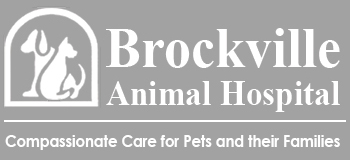Library
-
Female dogs will have their first estrous (reproductive or heat) cycle when they reach puberty. Each cycle consists of several stages; the stage called estrus refers to when the female can become pregnant. This handout explains the cycle stages and signs as well as how to prevent mating and pregnancy in your female dog.
-
Estrus (heat) begins when a female dog reaches sexual maturity and occurs about twice per year, although it varies from dog to dog. From the beginning of a female’s estrus period, she will be attractive to male dogs, though she will usually not be receptive or allow mating until seven to ten days into her cycle. The time of mating is extremely critical and it is highly recommended to have your female tested to determine the optimal days for breeding.
-
Ethylene glycol, a sweet-tasting, odorless liquid, is the active ingredient in antifreeze. Ethylene glycol can also be found, in lower concentrations, in some windshield de-icing agents, hydraulic brake fluid, motor oils, solvents, paints, film processing solutions, wood stains, inks, and printer cartridges. Ethylene glycol is poisonous to dogs: as little as half a teaspoon per pound of a dog's body weight can result in death. Immediate treatment is essential.
-
Maintaining open and honest communication with your veterinary healthcare team throughout your dog's life creates a foundation for effective communication when the dog's life draws to a close. Your veterinarian can clarify any medical implications of your dog's disease that may suggest that euthanasia should be considered. Most often, euthanasia is provided at the veterinary practice or in your home. Your veterinarian can clarify any medical implications of your dog's disease that may suggest that euthanasia should be considered.
-
Evan’s syndrome is the term used when a pet has both immune-mediated hemolytic anemia (IMHA) and immune-mediated thrombocytopenia (ITP). With this condition, the body destroys its own red blood cells and platelets. Prognosis is variable and depends on the underlying cause and the pet’s general condition at the time of diagnosis. Relapses are common.
-
Exercise restriction refers to the act of intentionally limiting a pet’s physical activity. Veterinarians often recommend exercise restriction to allow a pet to heal after a surgical procedure or injury, although it may also be recommended to prevent worsening of a medical condition. Different circumstances require different degrees of exercise restriction, so your veterinarian’s guidance is essential when implementing exercise restriction.
-
Proprioception is the ability to know where your body is in space. This is what helps reduce falls and injury. Proprioception may be lost suddenly through spinal cord trauma, or it may be reduced with age, joint disease (osteoarthritis), or other orthopedic or neurologic disease. Some specific controlled exercises that can improve proprioception are discussed. Any exercise plan needs to be formulated by a veterinary rehabilitation therapist to avoid injury.
-
Controlled, regular physical exercise is one of the core treatments of canine osteoarthritis, along with weight control, physical rehabilitation, and pain management. Exercise increases circulation to the muscles and joints, decreases stiffness in the joint capsule and soft tissues, reduces pain, maintains strength, and benefits the cardiovascular system. Left untreated, the chronic pain of arthritis causes a continually worsening cycle of less movement, weight gain, muscle loss, decreased strength, and loss of cardiovascular fitness.
-
The pancreas is an organ near the stomach and small intestine that produces enzymes needed for digestion, as well as hormones such as insulin that regulate blood sugar levels. Dogs with exocrine pancreatic insufficiency (EPI) are unable to digest nutrients in their diet properly, resulting in maldigestion, weight loss, and abnormal feces than can appear unusually pale and fatty. The disease can be congenital, genetic (such as in German shepherds), or acquired through pancreatic damage. Prognosis is good with treatment, although rarely diabetes is associated with the condition.
-
All glues containing isocyanate and diisocyanate can expand. Pets exposed to a very small amount of wet or liquid expanding glue may consume enough product to be problematic. Foreign body obstruction due to a mass of expanded glue in the stomach is the most common outcome in dogs ingesting expanding wood glues. After abdominal X-rays confirm the presence of a glue mass and obstruction, surgery is required to remove the mass, or endoscopy in mild cases. The prognosis for recovery from expanding glue ingestion depends on the removal of the mass.

